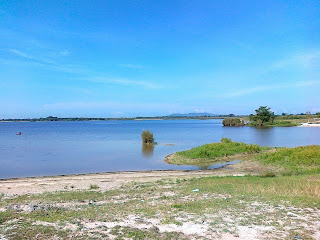 Inter-connecting former tin mining lakes at central Peninsular Malaysia -now become our open outdoor laboratory and extended training "center"for environmental study involving, radionuclides and heavy metals pollution and linkages, water quality, sediments chronology, flora and fauna uptakes, radon exposure, rare earths recovery from "amang" ........
Inter-connecting former tin mining lakes at central Peninsular Malaysia -now become our open outdoor laboratory and extended training "center"for environmental study involving, radionuclides and heavy metals pollution and linkages, water quality, sediments chronology, flora and fauna uptakes, radon exposure, rare earths recovery from "amang" ........All levels of students, BSc, MSc and PhD, involved in the various research topics related to the study area.
This breathtaking scenery is one of the lakes studied by our research group --- ESCaN - Environmental Study using Conventional and Nuclear methods, Faculty of Applied Sciences, Universiti Teknologi MARA, Malaysia.
This breathtaking scenery is one of the lakes studied by our research group --- ESCaN - Environmental Study using Conventional and Nuclear methods, Faculty of Applied Sciences, Universiti Teknologi MARA, Malaysia.

